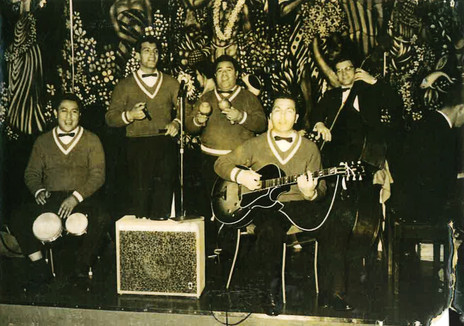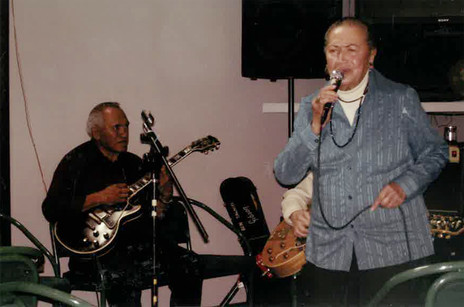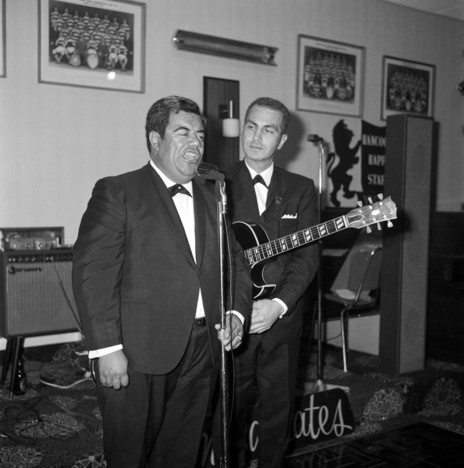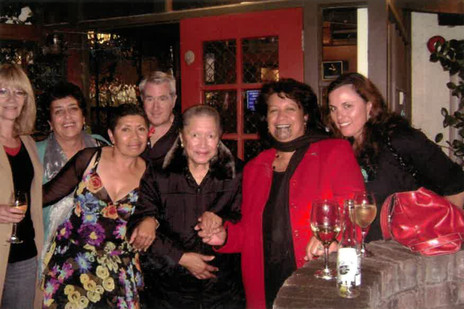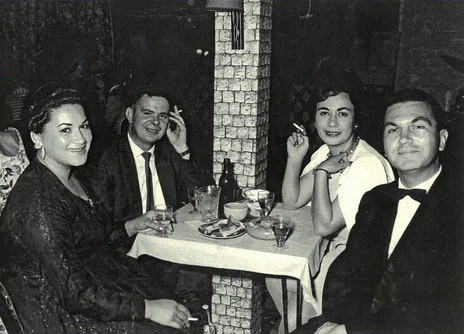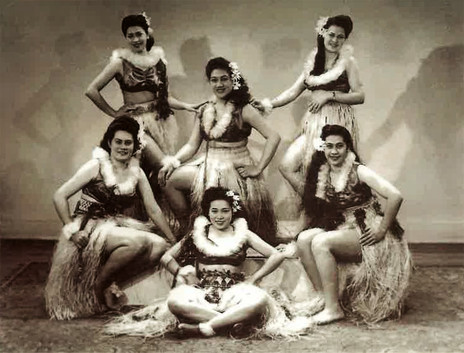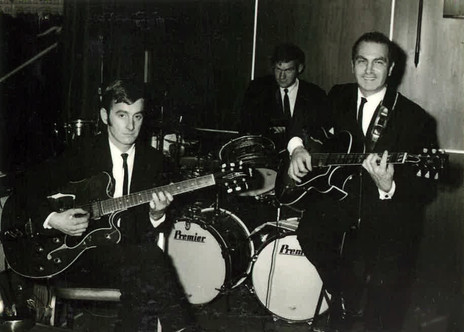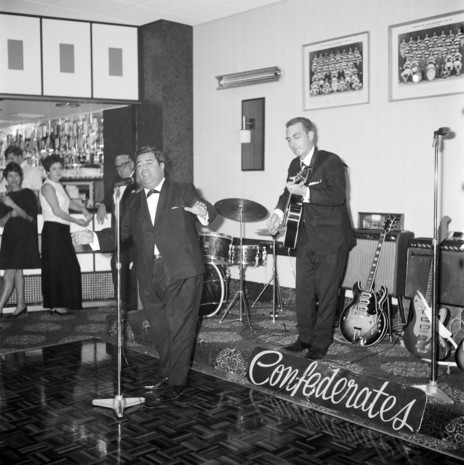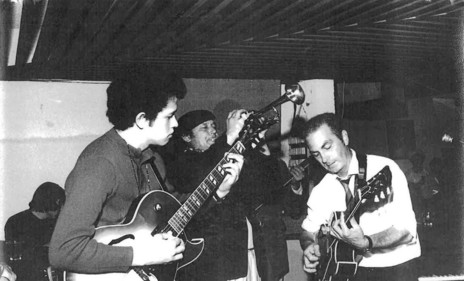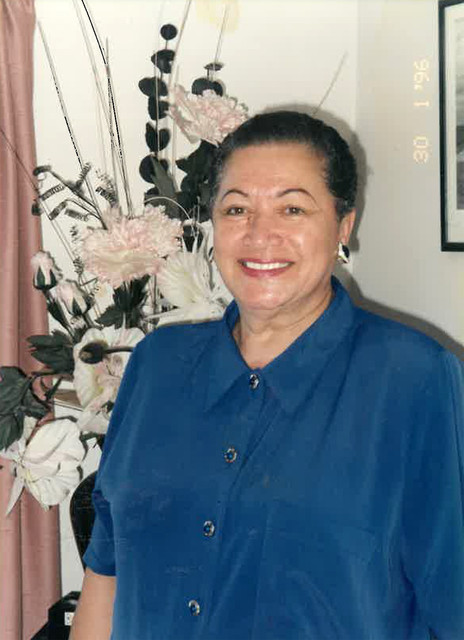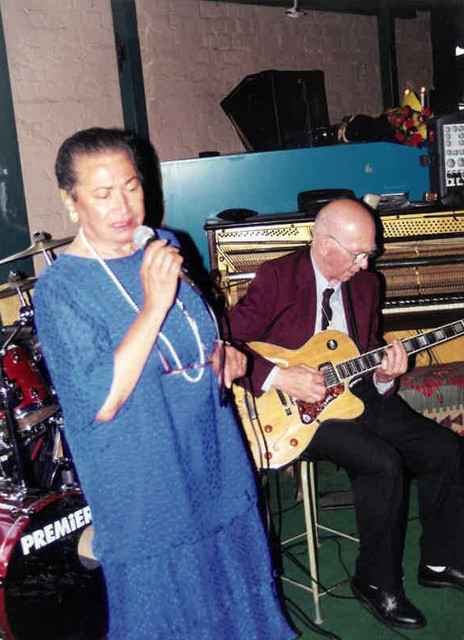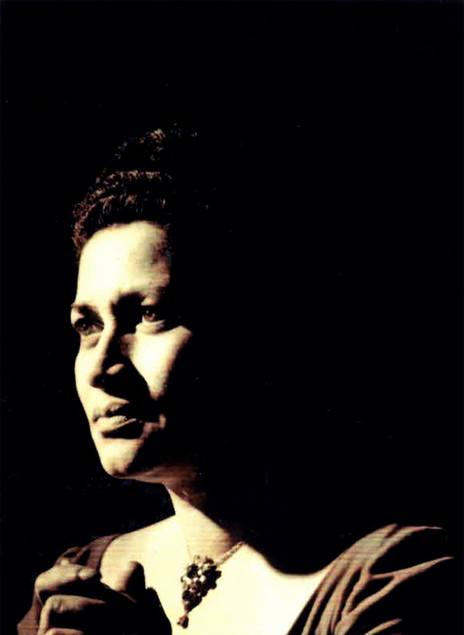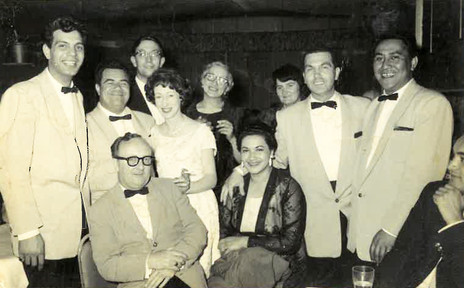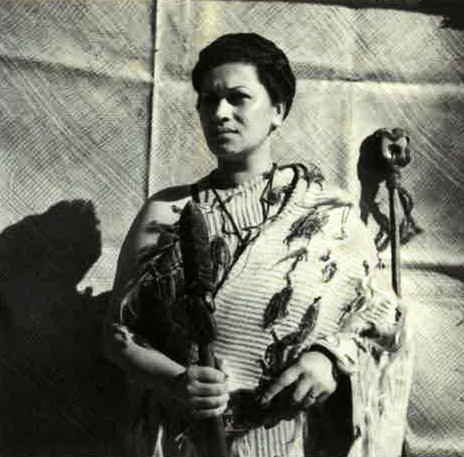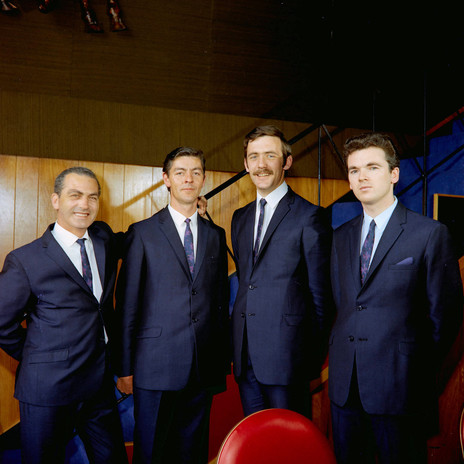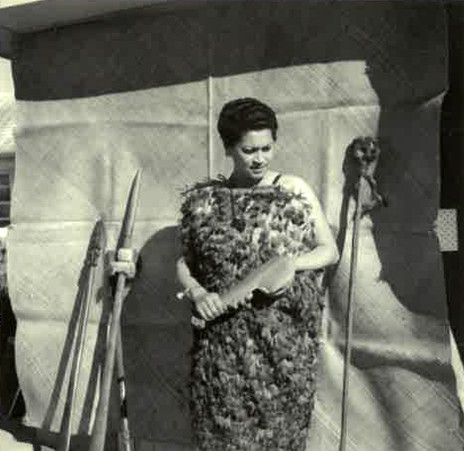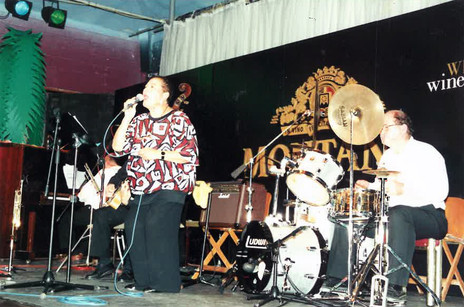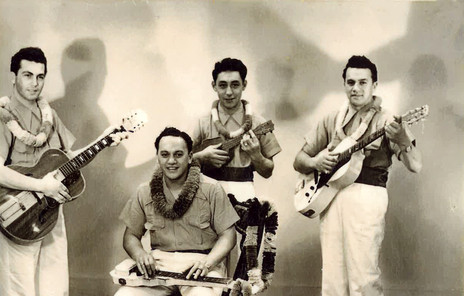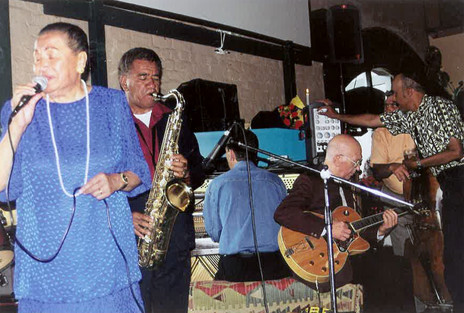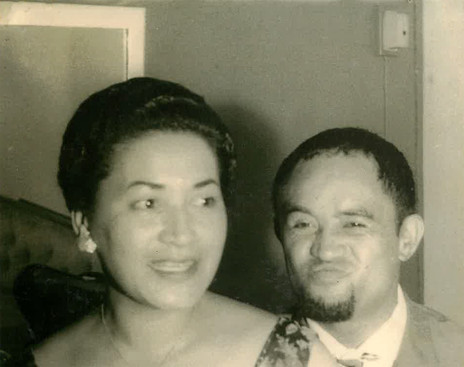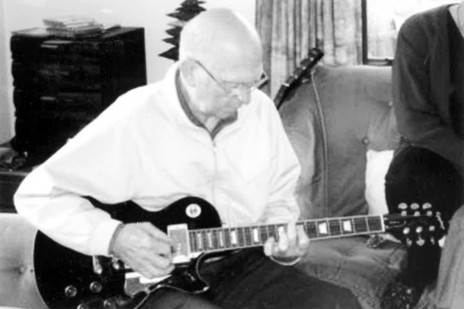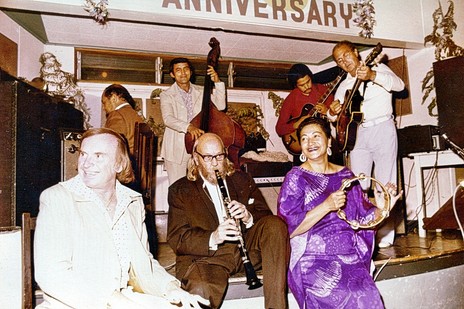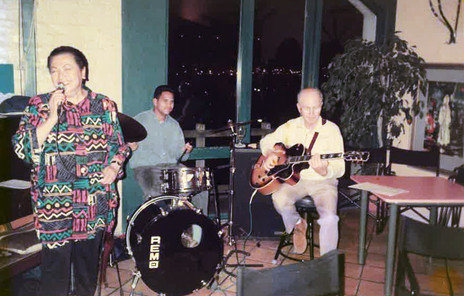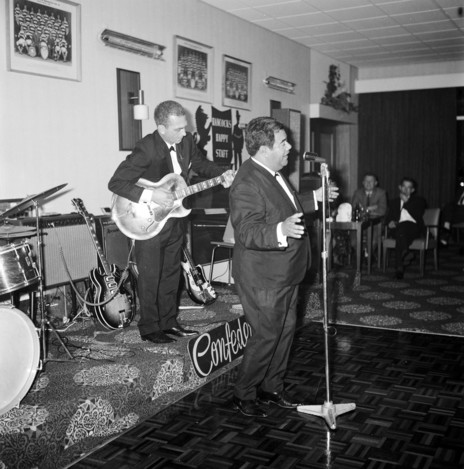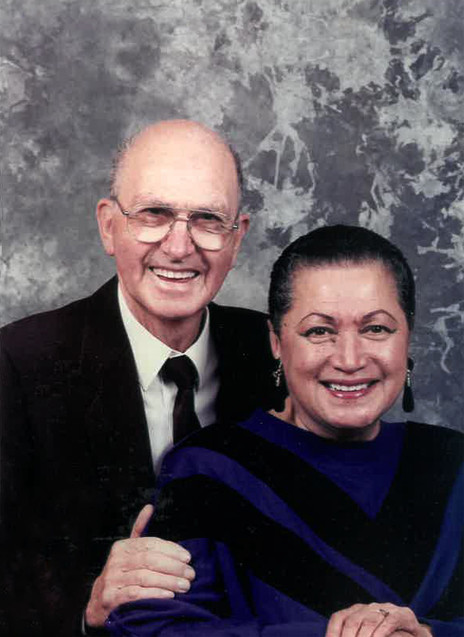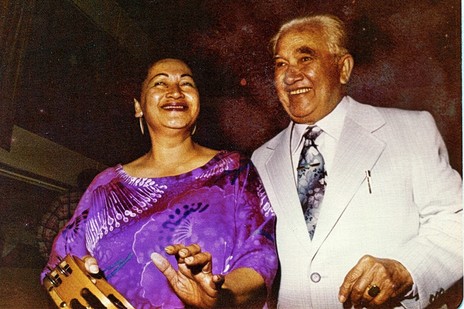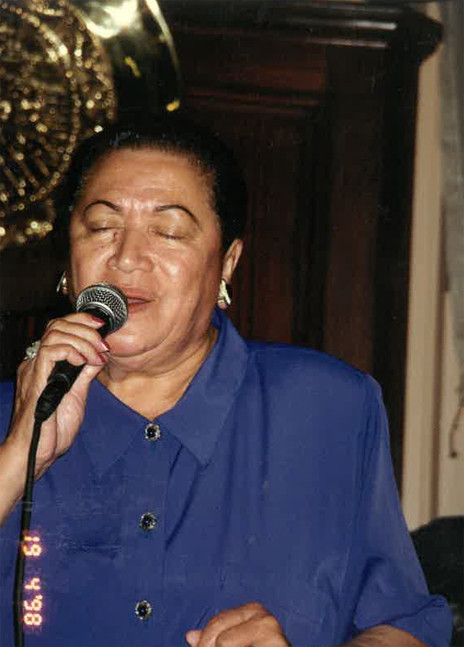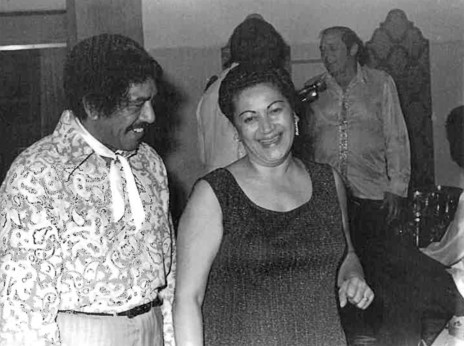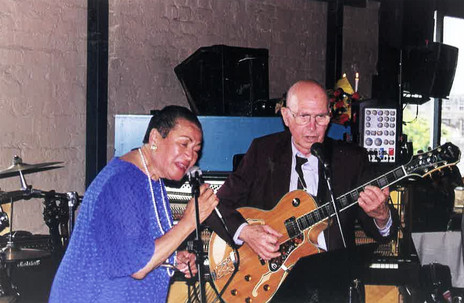Johnny and Millie Bradfield were never accorded the recognition that they deserved, leaving behind a sparse recorded legacy which belies an enormous influence over Auckland’s jazz scene over a half-century. Chuck Morgan and Tuhi Timoti are just two acclaimed guitarists mentored by Johnny Bradfield; Beaver and Truda Chadwick are just two jazz singers who cite the influence of Millie Bradfield.
The son of an English merchant seaman, Alfred Henry “Johnny" Bradfield was born 27 September 1927 and raised in Freeman’s Bay, attending Napier Street and St Patrick's primary schools He was a sporty sort, captaining St Patrick's 1st XV rugby team, but music appealed more and the guitar was the instrument he mastered. Marriage to Millie and with a large family to support, he was rarely a full-time musician, holding down a string of mostly unskilled positions throughout his life.
A contemporary of Bill Sevesi, Bill Wolfgramm and the Kahi brothers, playing alongside these esteemed guitarists, sometimes in the same line-up, Johnny Bradfield had a lengthy spell with the 1YA Radio Band and was on call, nine-to-five work commitments allowing, for regular stage performances and occasional recording sessions.
Amelie Penney was born in Awanui on 27 February 1931. Initially raised by her grandparents in Mitimiti, at age four she was reunited by her mother in Matata. There were other shifts, including three years at St Joseph’s, the Māori girls’ boarding school, but by 1941 Millie Bradfield was living in Auckland, where she finished her schooling and joined the workforce at a shoe store.
A keen exponent of the hula, in 1949 she successfully auditioned for a South Island tour with Rodney Farrey’s Hawaiian Show.
Millie had always enjoyed singing in school choirs but her entry into the entertainment industry was a result of her dancing abilities. A keen exponent of the hula, in 1949 she successfully auditioned for a South Island tour with Rodney Farrey’s Hawaiian Show. The guitarist was a quiet pākehā fella named Johnny Bradfield. They married in January 1950 and the kids, five daughters, started arriving in November 1950 – Linda, Mary, Anne, Janette and Michelle. All of them, to varying degrees, embraced music, notably Mary, a member of the Fair Sect, the 1960s all-female beat group. Anne’s son, John, was raised by John and Millie; in their later years, John Jr was John and Millie’s drummer.
With the obligations of a growing family, Millie Bradfield’s professional dancing finished and singing opportunities were few. In 1996 she told Sue Ormsby, who was writing a thesis on Māori musicians of the 1960s, “I started singing with John at home. When he was practising his guitar, I’d say let’s sing this and let’s play that and it's started from there. My first job was at The Arabian Nightclub ... because John was playing there and they’d say come on, give us a song and so I’d sing a few songs.”
The couple’s residency at the Arabian lasted for several years; there were other engagements and they were habitues of the Maori Community Centre.
The Bradfields, particularly John, were regulars at Auckland Town Hall concerts, and Millie made several television appearances. Recordings were few but in 1960 Millie contributed vocals to The Musical Moods of Bill Wolfgramm and the following year she received a full credit on Wolfgramm’s follow-up album, Songs and Rhythms of the islands.
It was these recordings which brought Millie to the attention of renowned London jazz club owner Ronnie Scott. As noted above, Millie was loathe to spend months apart from her husband, putting an end to those plans. Not that she didn’t sang without him. With Johnny in demand as a sideman and session musician, and a regular component in the 1YA Radio Band, Millie was occasionally obliged to work with other accompanists, notably pianist Marie Francis.
If not for family duties, Millie Bradfield may have become a genuine star. During a New Zealand tour, Millie met and impressed one of her greatest influences, Ella Fitzgerald, and she was the first singer of choice for some of New Zealand’s top band leaders. She told Sue Ormsby, “I love music but it has had to take second place over my family and I had to concentrate more on them than anything else. So music has always been secondary, but it has certainly helped us over the years, because times haven’t always been easy and it was a means of getting food on the table and clothes on the back, but oh gosh, I don’t regret a minute of it.”
The first wave of rock’n’roll marked change but the demand for jazz and polished cabaret acts kept John and Millie in work. The second wave, though, had a greater impact and there was no longer any blurring between teenage and adult entertainment. Only the best-heeled jazz and cabaret venues survived, the radio bands were soon being phased out, and there were fewer session opportunities for a guitarist whose influences were Jim Hall and Wes Montgomery, rather than Eric Clapton and Jimi Hendrix. Johnny Bradfield didn’t use a fuzz box and Millie Bradfield didn’t wail.
But the couple survived and in 1969 they began a lengthy residency at The Sorrento, in a group featuring trumpeter Bob Griffiths and a second guitarist, Chuck Morgan, part of Millie’s whānau and one of John’s pupils. Other pupils included Phil Key from The La De Da’s and, later, Andrew Langsford – “The Bradfield family meant a great deal to me and my musical development. From the age of 11, I would excitedly run to the family’s Mt Roskill home where I was always greeted with a lovely smile from Millie before going in to be amazed by Johnny. What a player, what a teacher, and what a humble patient man he was with me! I learnt so much and I loved the jazz he showed me. It opened up the guitar for me, he made it make sense.”
In the 1980s the Bradfields enjoyed a lengthy residency at Carthew’s on Ponsonby Road, the band including pianist Crombie Murdoch and the Bradfields’ longtime trumpeter of choice, Bob Griffiths, whose son Alex sometimes sat in with the band on bass.
In the 1990s occasional gigs at The Alhambra, also on Ponsonby Road, led to a Saturday night residency between 1995 and 2001, the line-up featuring trumpet-player Ted Kinsella, Millie’s cousin Bert Penney on double bass and John Bradfield Jr on drums. Johnny’s health deteriorated in the 2000s and gigs became more sporadic but whether performing together as a duo or with full band, Johnny and Millie Bradfield were always a class act, a cut above most of the competition.
